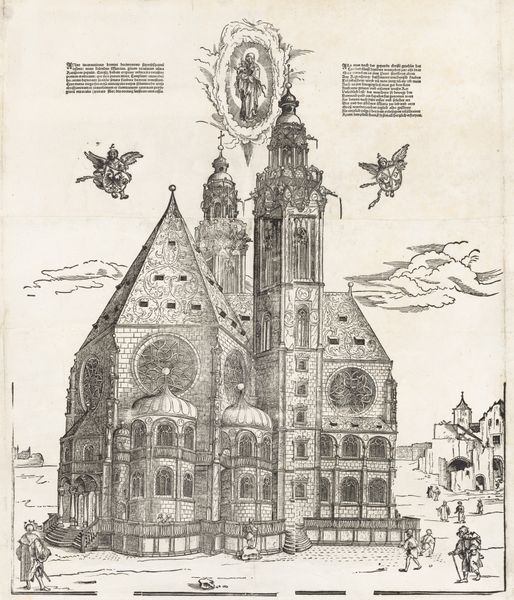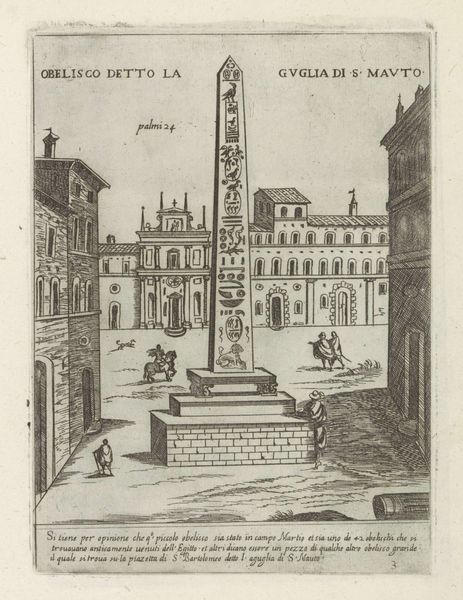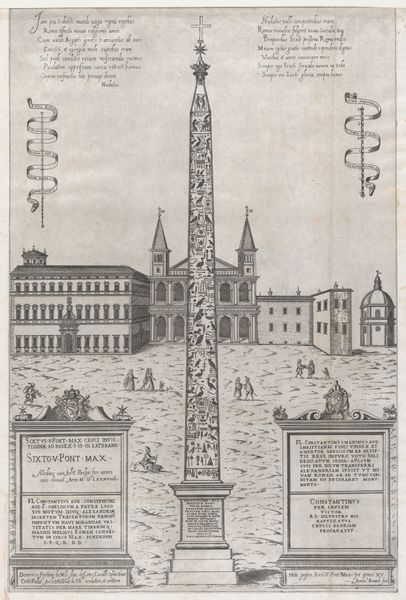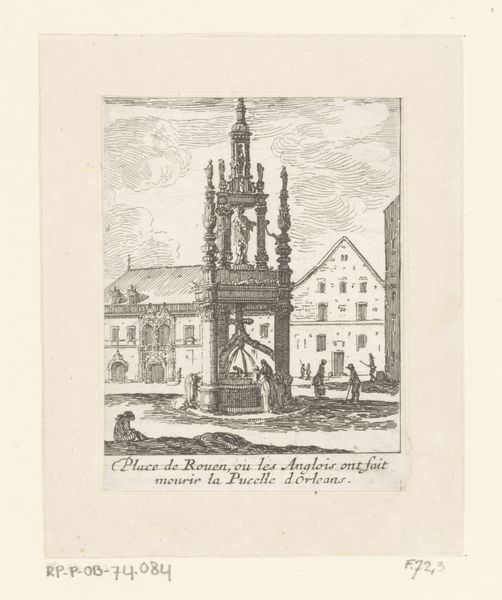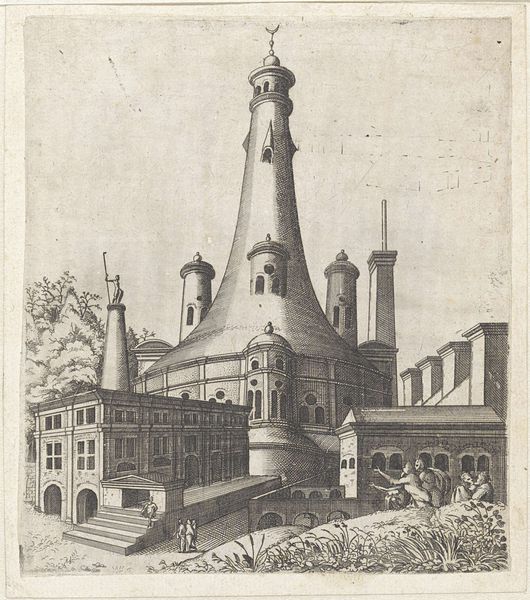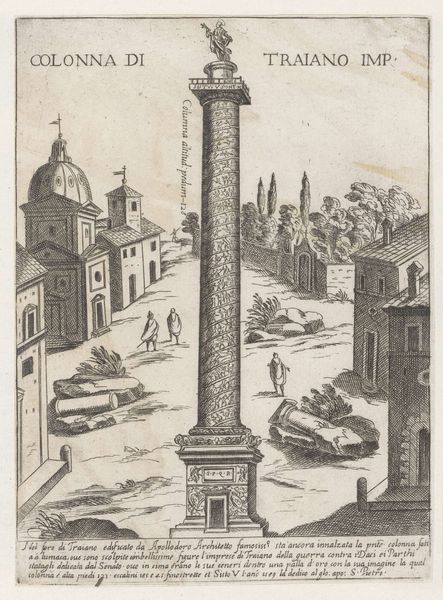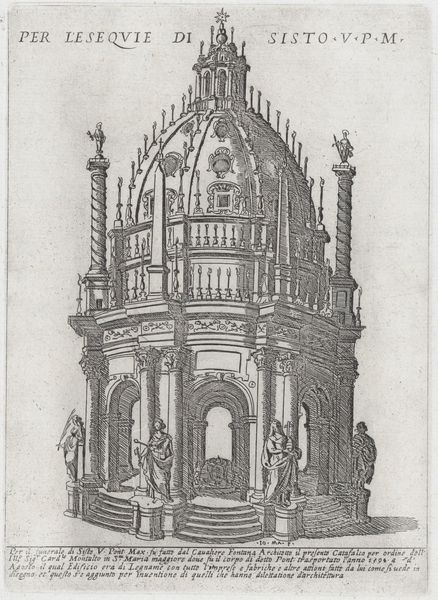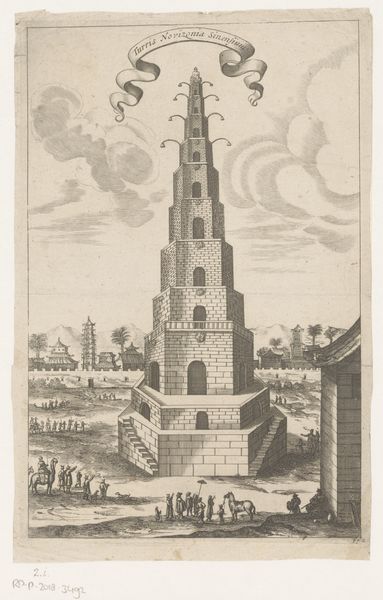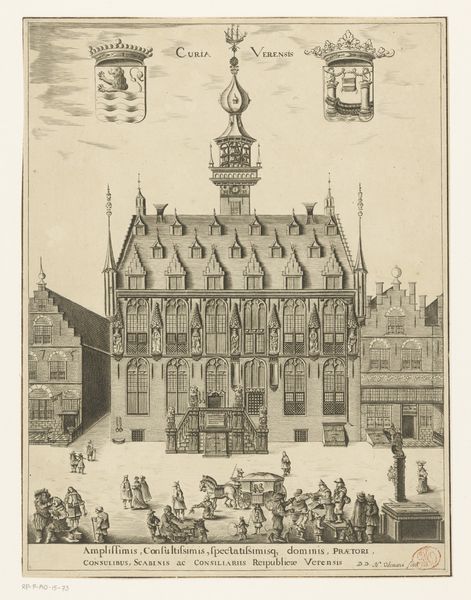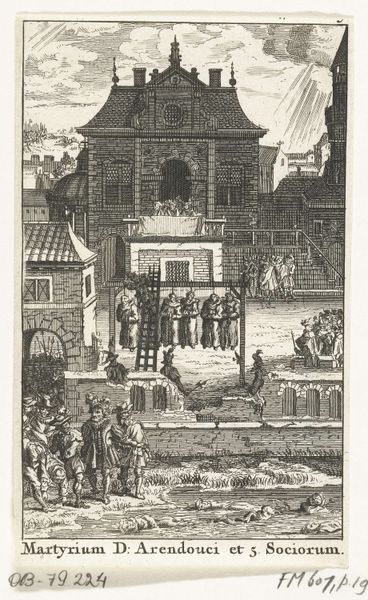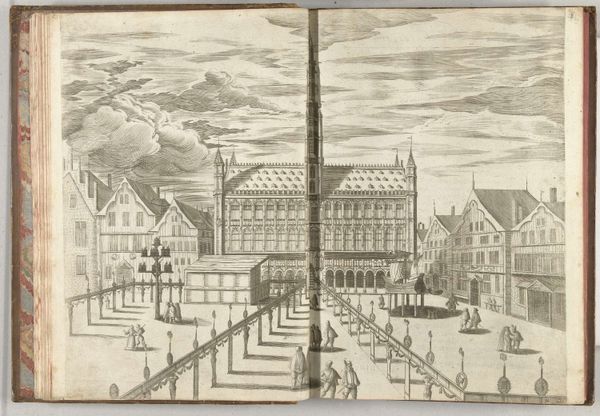
print, engraving
#
baroque
# print
#
cityscape
#
history-painting
#
engraving
Dimensions: height 211 mm, width 155 mm
Copyright: Rijks Museum: Open Domain
Curator: Look at the striking verticality in Giovanni Maggi’s 1651 engraving, "Lateraanse Obelisk achter de Sint-Jan van Lateranen te Rome," housed at the Rijksmuseum. I'm immediately struck by the contrast between the looming obelisk and the surrounding architecture. There's almost a tension in the way it disrupts the relatively horizontal cityscape. Editor: The strategic placement of the obelisk is central to understanding its significance during this time period. Repurposing the obelisk, initially transported to Rome by Emperor Constantine, to serve as a Christian symbol in front of the Basilica di San Giovanni in Laterano makes an unequivocal statement about the city's newly reclaimed identity. Curator: Precisely! The engraving itself reflects Rome's conscious effort to redefine its urban space through grand architectural projects. By foregrounding this iconic landmark, Maggi accentuates the obelisk's powerful role in legitimizing Papal authority, doesn’t he? Editor: Indeed, but I am equally drawn to the composition. It has an intentional arrangement; the precise lines of the buildings, the strategic positioning of the figures to create scale. See how the shadows create depth despite being monochrome, almost theatrical? Curator: I completely concur. The architecture and figures add scale, but I am mostly drawn to how this engraving promotes Rome's role as the new center of the Christian world through urban planning. It is almost propaganda. It sends the message, as if saying, "Look how the Papacy asserts its power." Editor: Perhaps it also is intended to portray power but not merely on that plane. By portraying that sense of power, what feelings, ideas, or cultural changes might an observer be able to understand? It isn’t always about power, is it? The clean geometry seems like it might serve multiple aesthetic goals. Curator: Perhaps it serves many goals. The level of detailing does give pause, however, in allowing observers to ask those very questions. Maggi’s careful placement and attention definitely provoke such responses. It's a fascinating demonstration of how urban space can be utilized for sociopolitical expression, especially given the style of the Baroque period. Editor: Absolutely, an example of Baroque-style artwork, revealing multiple potential interpretations that, no doubt, provide an active experience for any audience member.
Comments
No comments
Be the first to comment and join the conversation on the ultimate creative platform.

